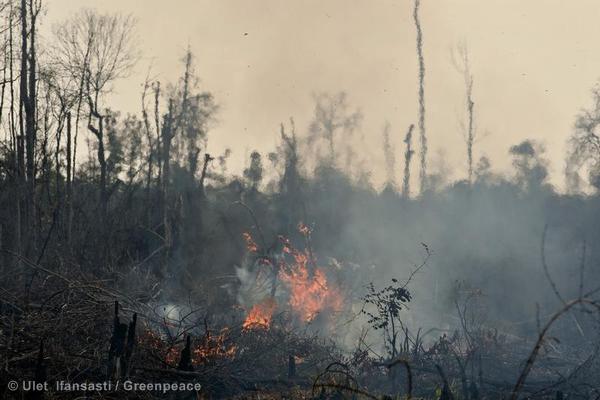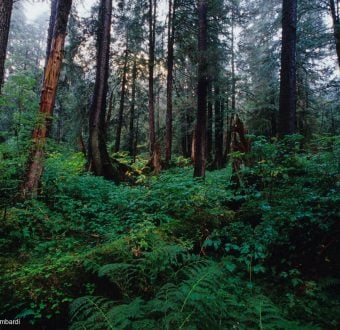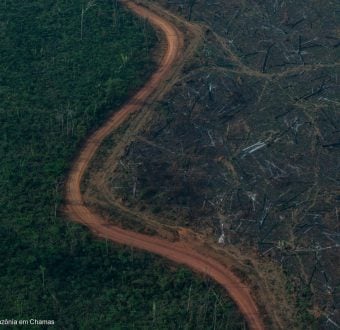Great news for lovers of Nutella’s chocolaty goodness….and lets be honest, who does not like that stuff??!? We all can now indulge in our delicious snack without worrying it is contributing to rainforest destruction and tiger extinction. Today the maker of Nutella, Ferraro, was the latest company to announced a commitment to only use palm oil that is traceable to zero deforestation.

This is proof that good palm oil is possible. And with Greenpeace’s help more and more companies are starting to get serious about finding a way to reduce impact that palm oil has on our rainforests and endangered wildlife, like the Sumatran tiger.
From the fruit and seeds of the oil palm tree, and straight into your soap, detergent, makeup, cookies and chocolate palm oil is everywhere. Its cheaper to grow than many of its alternatives, takes up less land space, and has a long shelf life, so its no wonder some of your favorite brands are using it on an ever-growing scale.

Local smallholder harvests palm oil fruits from farm in Africa
But if youre reading this, then you are no doubt aware that its not a benign commodity and Ferraro’s type of commitment is too uncommon. Forest destruction, habitat loss, land disputes, human rights violations and epic forest fires: palm oil has more than just a reputation problem. Its the largest driver of deforestation in Indonesia, and its growth is tied to some of the Southeast Asias worst environmental crimes ask our friends in Singapore! It is now an increasing threat in other regions, such as Africa, seen as the new frontier for palm oil industry.

Just a couple of weeks ago, we exposed the role of the worlds largest palm oil trader, Wilmar International, in this destruction. This Singapore-based company sits at the center of a global web of corporations stretching to companies that make products such as Oreos, Colgate toothpaste and Gillette shaving cream that are making us all unwitting accomplices in this destruction.

But for all its problems, boycotting palm oil is not a solution. Commitments like Ferraro’s that ensure only good palm oil is used, is the best route forward.
Palm oil is everywhere. No cookie-eating, soap-using, clean-clothed urbanite could really avoid using palm oil and its derivatives. Its also a critical part of the Indonesian economy, providing crucial income to rural communities and pumping money into this burgeoning country. So lets not ruin what is good about palm oil already buy boycotting it,and instead lets drive the industry toward commitments to avoid what is bad about palm oil.
Palm oil has an image problem rooted in the fact that in many cases it is not being produced responsibly. And the answer certainly doesnt rest with the Roundtable on Sustainable Palm Oil (RSPO), which despite having sustainable in its name, cannot guarantee to break the link between palm oil and forest destruction. And the answer is not to boycott a commodity that is crucial to Indonesia, and practically unavoidable in the products we consumer.
So, what do we do about it?

The Sumatran Tiger is at risk from destructive palm oil.
Here are 3 things that would make a good start:
1. Demand companies implement a No Deforestation Policy.
Greenpeace envisions palm oil production by local communities and industrial players that protects forests, and follows responsible agricultural practices while contributing to economic development and respecting the social, economic and cultural rights of local communities. Its not some hippy ideal. It can be done, and indeed,Ferraro today showed that it is being done. All consumer companies, traders and palm oil producers need to implement a No Deforestation Policy to ensure that the palm oil in their supply chains is free from forest destruction, land conflict and human rights violations.
2. Spread the word that good palm oil exists.
Greenpeace believes that palm oil can be produced responsibly. Palm oil production has been part of the livelihoods of local communities in Asia and Africa for decades, and can contribute both to economic development, while protecting forests and other ecosystems. An example of this is the Dosan village on the Indonesian island of Sumatra. Palm oil producers, like the members of the Palm Oil Innovation Group, have also shown that there is a business case for palm oil production that does not lead to forest destruction or violate the rights of local communities.
3. Sign up. Now.
This is not the last youll hear from us. We have a long way to go until we transform the palm oil industry and end forest destruction. Palm oil can and must – make a genuine contribution to the development of emerging economies like Indonesia, rather than destroying the future for its people, its wildlife and the global climate on which we all depend.



